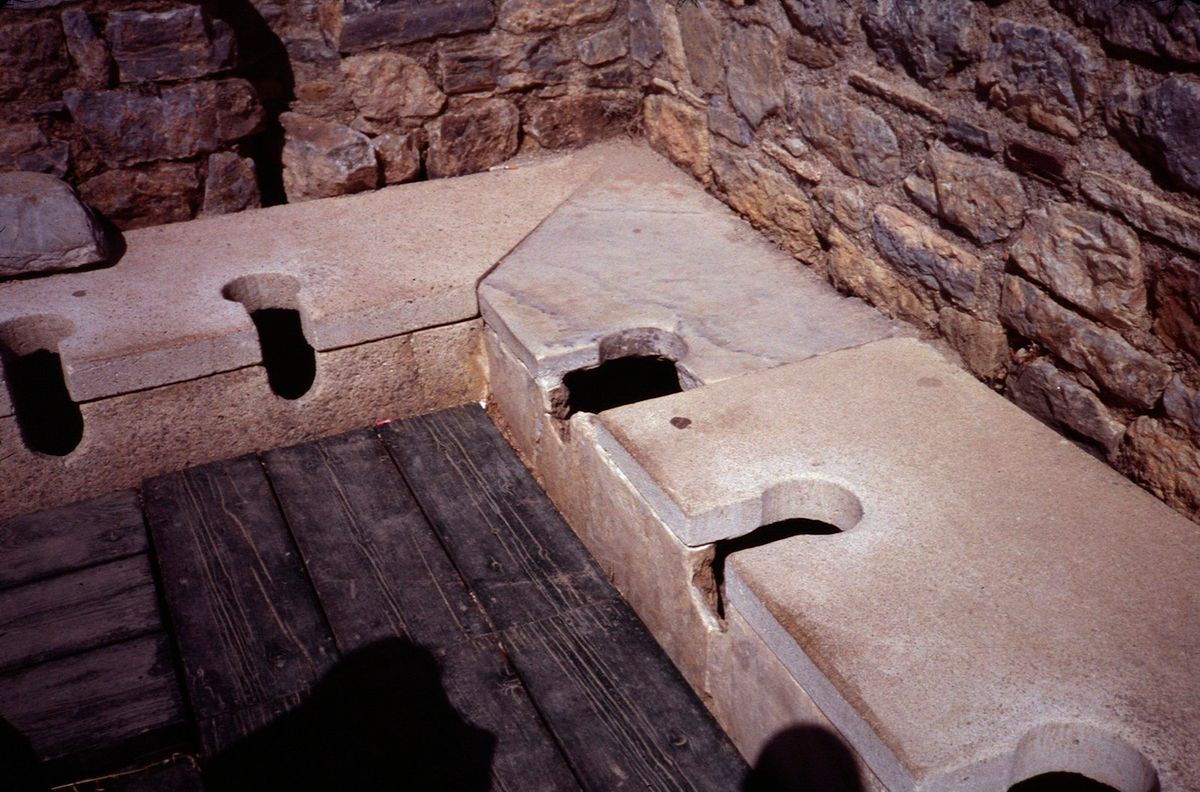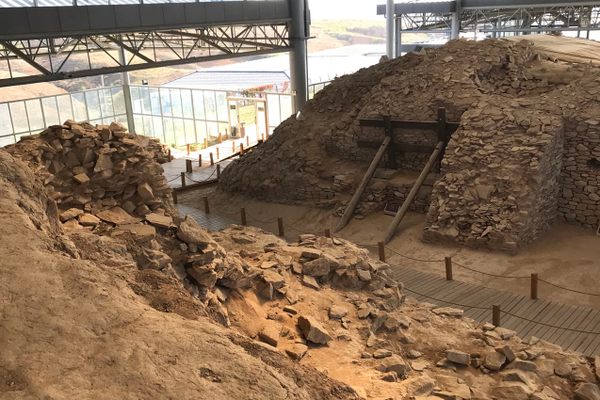About
The ancient city of Ephesus was one of the largest and most important in the Greco-Roman world, and the Ephesians had their fingers on the pulse of progress.
The Scholastica Baths, built in 1st century CE, included the budding versions of many modern conveniences. Ephesus had advanced public works, including municipal toilets with more than a dozen marble seats in place that can still be seen (and sat on, but please don't use) to this day.
A series of 36 holes designed to handle your business stretch across three long benches, and a trough where relatively clean water would be flowing sits near your feet. Toilet paper being a fairly modern convenience in this part of the world, the trough was used to dampen your sponge on a stick (known as a "tersorium") for personal cleansing, and then to "rinse off" said sponge. In the absence of flowing trough water, a bucket of salt water or vinegar water would be used, much to the irritation of everyone's nether regions.
The waste channels hidden within the murky innards of the city were deep for the standards of the times, between two and four meters, depending on location. It is said that if things were chilly, the high-rolling Ephesians would send enslaved people down to warm the seats. To garner use of the luxury of plumbing, one had to pay a fee to enter, and citizens enjoyed a small pool, mosaic floors, and pleasant company while socializing in the public loo.
Related Tags
Community Contributors
Added By
Published
May 14, 2013
































